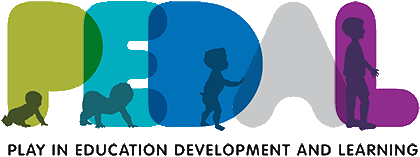The emergence of pro-social behaviors and social interaction skills is a major focus of research on children’s development. Here, we consider one important feature of human social interactions, interpersonal movement synchrony, and explore its effects on pro-sociality among young children. Coordinated movements are a crucial part of mother–infant interactions, with important social effects extending well into childhood. Musical interactions are also known to facilitate bonding between infants and caretakers and pro-sociality among peers. We specifically examine the pro-social effects of interpersonal movement synchrony in a naturalistic peer-play context among 4- to 6-year-old children. We assessed the amount of helping behavior between pairs of children following an activity that they performed synchronously or non-synchronously. Children who engaged in synchronous play, as compared with non-synchronous play, showed significantly more subsequent spontaneous helping behavior. Further, more mutual smiling and eye contact were observed in the synchronous condition and amounts of mutual smiling and eye contact during the movement task correlated with amount of helping behavior observed. Neither measure mediated the condition-wise effects on helping, however. These results are discussed in terms of their contribution to existing literature and their broader implications for the development of pro-sociality and coordinated movements in early childhood.
